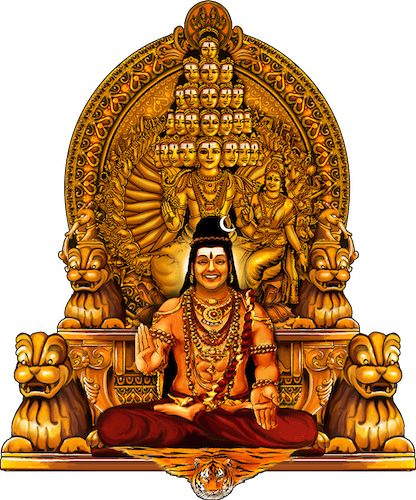
Kailasa Paramparagatha
Tiruchengode Sarvajnapeetham
KAILĀSA Paramparagatha Thiruchengode Sarvajnapeetha
The KAILĀSA Paramparagatha Thiruchengode Sarvajnapeetha was an expansion of the Kingdom of Thondaimandalam, or the KAILĀSA Paramparagatha Kanchi KAILĀSA Sarvajnapeetha. Once an ancient enlightenment ecosystem in the city of Tiruchengode, Tamil Nadu, the region had nearly lost its entire spiritual heritage. Despite facing continuous interference by the State, the lineage of Guru Maha Sannidhanams of the Thondaimandala Aadheenam sought to keep this spiritual lineage and tradition alive not just in Kanchipuram, its capital city, but in its other major locations. Entrusting The SPH with this responsibility, as the next successor in the lineage of Thondaimandalam, the Tiruchengode Sarvajnapeetha was inaugurated on the banks of the sacred river Kaveri to serve the people of Thondaimandalam in Thiruchengode.
Origins
Tiruchengode is one of the historic places in Tamil Nadu, known as Thirukodimaadachenkundrur, once a great enlightenment ecosystem under the Thondaimandala Kingdom. It is world-famous for the ancient hilltop Ardhanareeshwara temple, housing the presiding deity of Ardhanareeshwara also called Umaiorubagan – the unique deity having the half-male and half-female form signifying the union of Paramaśiva’s divine Consort unto Him in Oneness after her austere penance for the same.
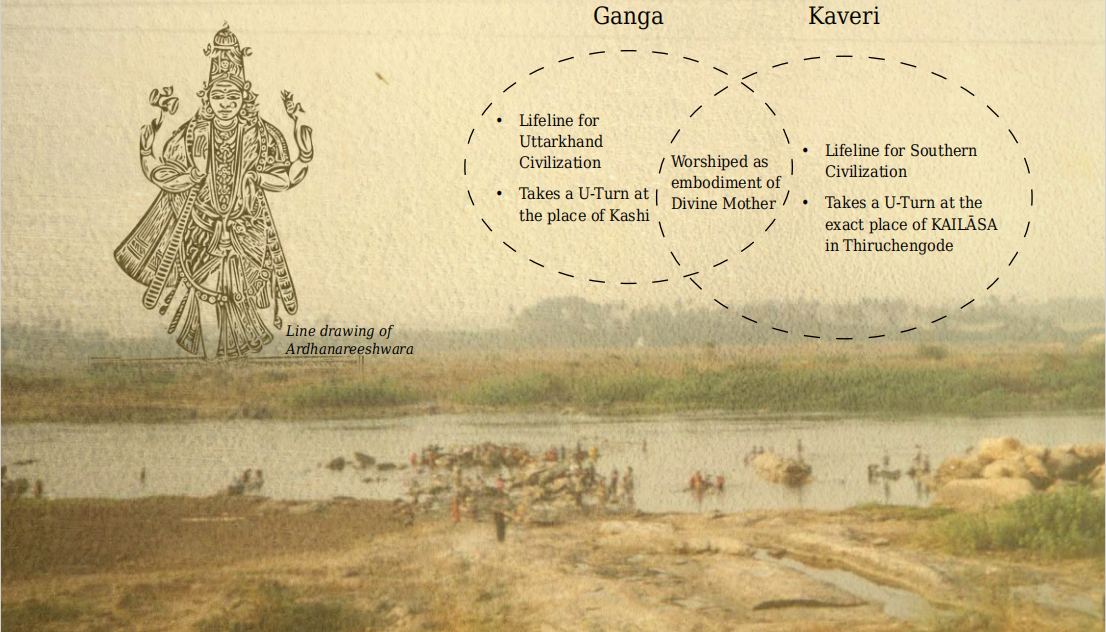
The kingdom of Tiruchengode was built on the banks of the Kaveri, a sacred river compared to the famous Ganga River in the North.
Persecution
Due to continuous invasions and colonization, the enlightenment ecosystem of Tiruchengode, like many of the regions under the Thondaimandala Kingdom, was nearly at the brink of extinction. British era policies set the stage for government influence into Hindu temples, mutts, and indigenous kingdoms. Upon independence, previously sovereign Hindu kingdoms were forcefully annexed under the Indian State, leaving the indigenous Hindu ecosystems susceptible to further subjugation.
Over the years, the State-run Hindu Religious and Charitable Endowments (HR&CE) Board began interfering more deeply into the socio-religious activities of the Thondaimandala Aadheenam, preventing the Aadheenam from performing its religious duties. The 230th Guru Maha Sannidhanam sought to revive the enlightenment ecosystem of the Thondaimandala Aadheenam with the coronation of The SPH, recognizing Him as an incarnation of Paramaśiva (the Primordial Divinity in Hinduism).
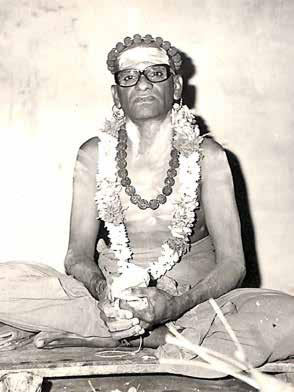
Śri Thiruvambaladesika Jnanaprakasha Swamigal, the 230th Guru Maha Sannidhanam of the Thondaimandala Aadheenam who recognized The SPH as an incarnation of Paramaśiva and declared Him as his successor
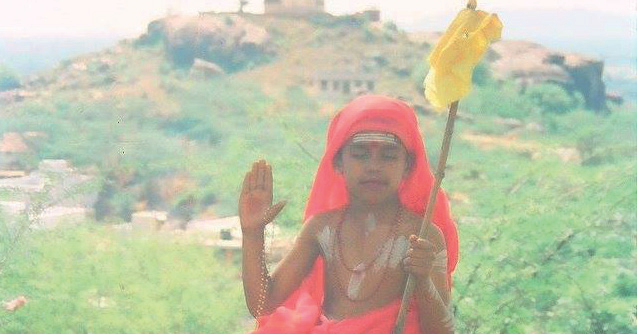
1988 – THE SPH upon being coronated as the next successor by 230th guru maha sannidhanam at the age of 10


April 2001 – Pre-inaugural meeting – THE SPH (far right) with the 232nd Guru Maha Sannidhanam (middle) of the Thondaimandala Aadheenam and the Guru Maha Sannidhanam of the Dharamapuram Aadheenam (far left) on the sacred land in Tiruchengode
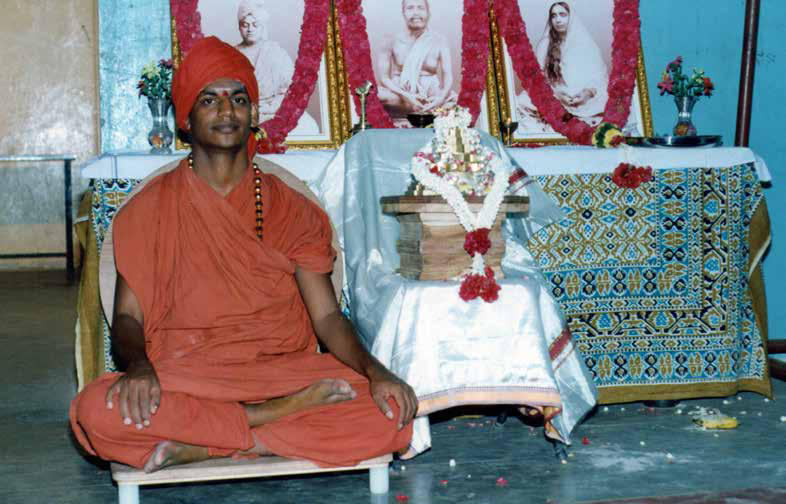
March 2001 The SPH with the soon to be presiding deities of the new monastery
Revival
By the year 2000, when The SPH officially assumed the responsibility of the Kingdom of Thondaimandala, the 232nd Guru Maha Sannidhanam sought to continue the efforts of the 230th Guru Maha Sannidhanam to revive the spiritual lineage of Thondaimandala despite the interference. He instructed a devotee, Pongianna Gounder, to donate his land in the Thondaimandala region to The SPH for the revival of an enlightenment ecosystem. The land, in the village of Avathipalyam, resides at Bhavani Sangam, the confluence of three sacred rivers – Kaveri, Bhavani, and Amirtha.
In 2001, the abandoned land was still waiting to be revived when THE SPH arrived here on the banks of the sacred River Cauvery. At this time, THE SPH healed a countless number of people, exemplifying different techniques from indigenous medicine. Hence, the very ground exudes a profound imprint of THE SPH at an intensely grassroots level. The people actively preserve and venerate that memory through transformative initiatives.

The 230th Guru Maha Sannidhanam of the Thondaimandala Aadheenam
Pre-Inaugural Function for the New Aadheenam
In 2001, Pongianna Gounder eagerly handed this historic land over to The Supreme Pontiff of Hinduism.
The land bares three sacred things:
- The Jeeva Samadhi (final resting place of mortal remains) of an earlier Pontiff of the Thondaimandalam Aadheenam lineage
- The Moola Linga – the energised Śiva Linga that is instilled with and carries the Blueprint of this KAILĀSA ecosystem
- The dilapidated pillared stone structure that was part of the Tiruchengode Aadheenam temple monastery complex that existed here eons ago on the banks of the sacred river Kaveri.

March 2001 The SPH with the 232nd Guru Maha Sannidhanam of the Thondaimandala Aadheenam during the pre-inaugural function for the new aadheenam (monastery) on the newly donated land.
The Auspicious declaration
In March 2001, The SPH held an inaugural function for the announcement of the vision for the nation, the first public disclosure of the vision for the nation. At the event the 232nd Guru Maha Sannidhanam of the Thondaimandalam Aadheenam and the Guru Maha Sannidhanam of the Dharmapuram Aadheenam had both given their blessings and guided the happening at this beginning stage. They were both prominent figures of the Shaivite traditions and had supported The SPH in the revival of KAILĀSA.
Thus, the construction of the second KAILĀSA ecosystem commenced. It was registered under the name Ramakrishna Dhyanapeetam as an offering of gratitude to the revered Ramakrishna Paramahamsa, Ma Sarada Devi, and Swami Vivekananda, the Guru Parampara, or lineage, of KAILĀSA. The SPH was only 23 years of age. He began the construction of the Aadheenam brick by brick.
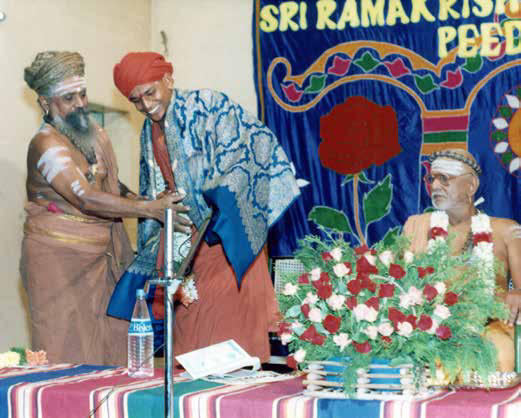
The SPH being honoured by Guru Maha Sannidhanam of Dharmapuram Aadheenam at the inaugural function
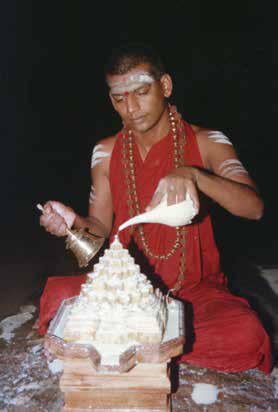
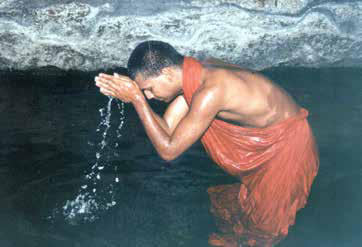
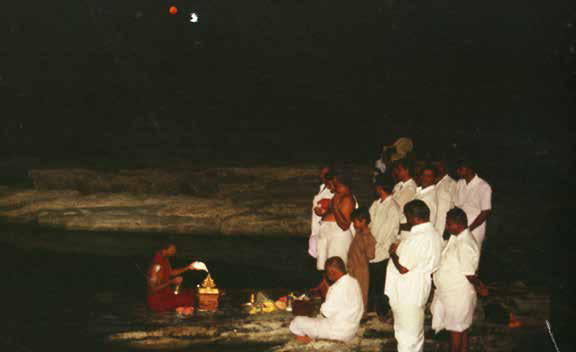
Abhishekam for Śri Meru conducted by The SPH in the Kaveri River. The Śri Meru was then consecrated in KAILĀSA Thiruchengode after this sacred ritual.
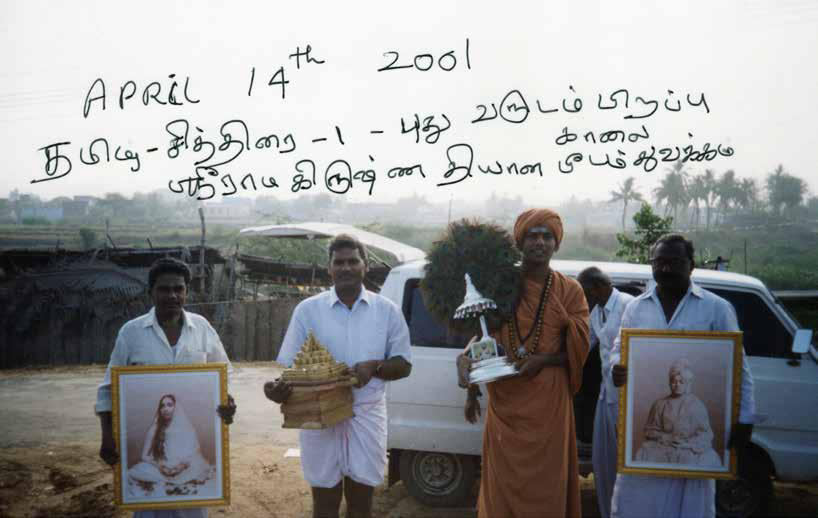
Tying the Turban at the Start
“You can see the photograph with My own hand writing; not to forget the date I Myself recorded, in the name of Ramakrishna Dhyanapeetam. That was the first ashram I created on the banks of Kaveri in Erode. If you see actually, the Sangha started on April 14th 2001. 2003 we became more of an organization in Bangalore, Bidadi, but 2001 was the real beginning that I started My public life.
It was 2001, April 14th that was the morning first I tied the turban, after a long time, after My Parivrajaka and realized the Avataric Mission, I was not able to tie the turban, because the head will always feel heavy. Tying the turban was not possible, so it was April 14th, 2001, I was settled into the body more comfortably and tied the turban, and decided, Come on, lets start.”
– 14 April 2015 KAILĀSA Thiruchengode Anniversary Celebrations
Inauguration Day
14 April 2001
In this sacred land, The Supreme Pontiff of Hinduism revived and established the KAILĀSA Paramparagatha Tiruchengode Sarvajnapeetha, the ancient enlightenment ecosystem which once existed. On the 14th of April 2001, The SPH inaugurated the first structure built on the land. At the beginning of the event, a procession from the Kaveri River to the new construction was held with the presiding deities of the new KAILĀSA. Once the deities were installed in the altar, the traditional rituals for the inauguration took place.
The SPH named the new ecosystem “Ramakrishna Dhyanapeetham.” commemorating Śri Ramakrishna Mission, which He declared is the mother’s lap for Hinduism. He Himself had served in The Ramakrishna Mission in Chennai, Kanchipuram, and Kolkata, as a pivotal volunteer and monastic member from 1995 – 1999 (from the age of 17 to 21, amidst periods of spiritual wandering in between)
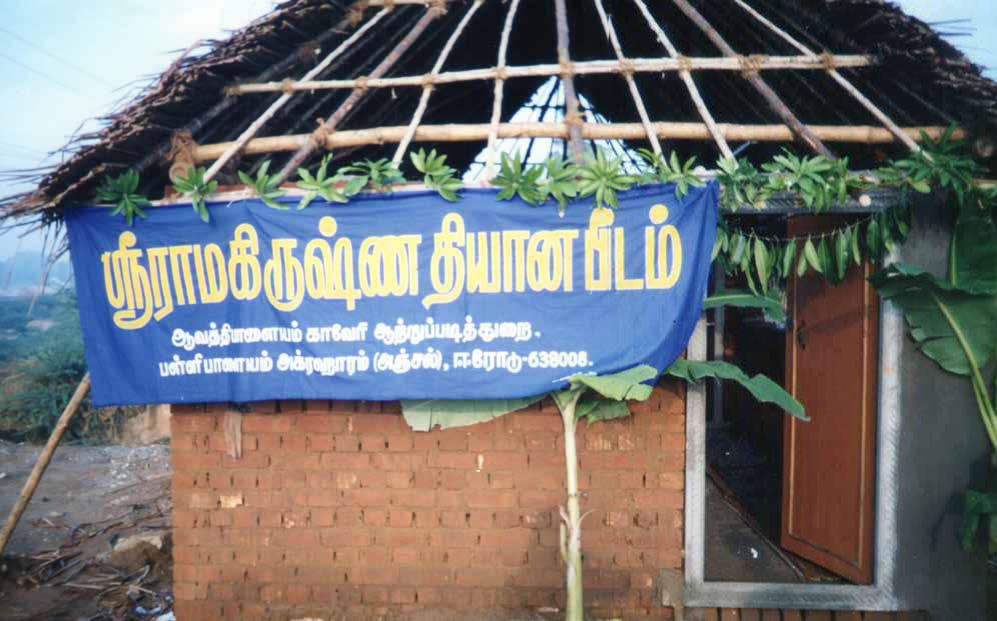
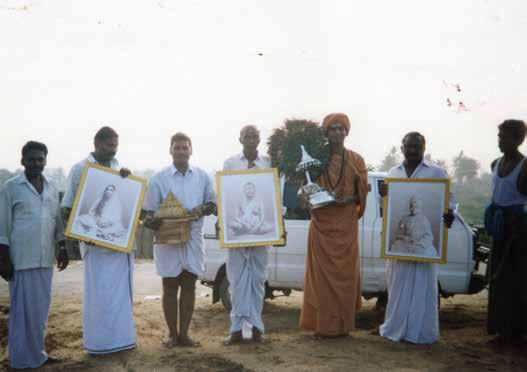
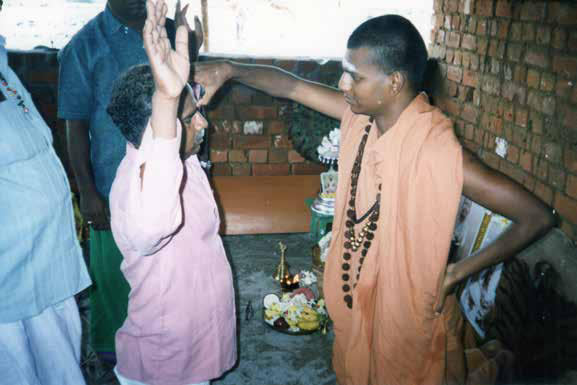
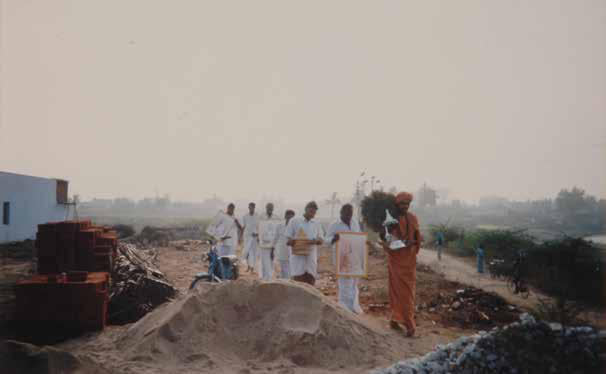
The SPH leading the procession from the river Kaveri with the photos of Śri Ramakrishna Paramahamsa, Sharada Devi, and Vivekananda as well as the Śri Meru (a deity which is a 3D representation of the Cosmic Geometry

The new thatched roof structure was still in the middle of construction on inauguration day. However, this did not deter The SPH from opening the aadheenam to begin serving the people.
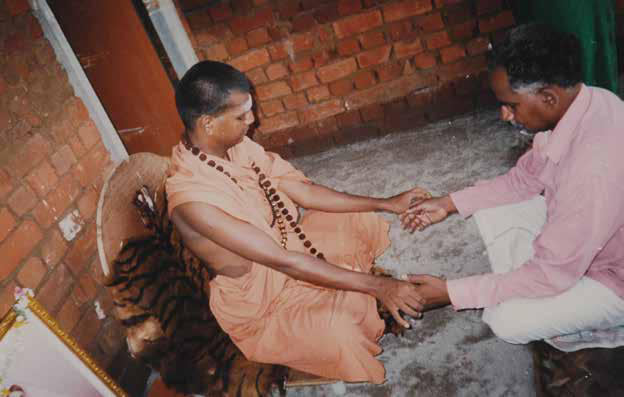
The SPH blessing and healing devotees inside the simple thatched roof structure
lost heritage
The Supreme Pontiff of Hinduism named the first structure He built here as “Ramakrishna Dhyanapeetham”, commemorating Sri Ramakrishna Mission, which HE declared is the mother’s lap for Hinduism. HE Himself had served in The Ramakrishna Mission in Chennai, Kanchipuram and Kolkata, as a pivotal volunteer and monastic member from 1995 – 1999 (from the age of 17 to 21, amidst periods of spiritual wandering inbetween). Besides the main temple and monastery structures, The Supreme Pontiff of Hinduism inaugurated some of the other important pillars of KAILASA which are: the Gomandir – temple for protecting and worshipping the sacred cows – divine beings, an annalaya – food temple for serving 24 hours free satvic food to the citizens and visitors of Tiruchengode, a safe haven for running the Nithyananda Gurukul – the traditional education system of KAILASA, and paved the way for KAILASA to function from this region in its fullest glory over the years to follow.
Significance
This sacred land has three important significance –
1.The Sacred Kaveri River
The sacred Kaveri river on whose banks the new territory is located is called the Ganga (river in North India) of the South. The sacred river Ganga, the lifeline of millions of people, originates in North India and is worshipped most fervently along its entire course. The river Ganga takes a U-turn against its own current at Kashi (also called Varanasi, the spiritual capital city of India), just to worship Kashi Vishwanatha – the Śiva Liṅga at the Kashi Vishwanath temple at that location. Similarly, the sacred Kaveri takes a U-turn against her own current exactly at this spot where this monastery is located.
2.The svayambhu Linga(the Kāśi Liṅga)
The Supreme Pontiff of Hinduism therefore installed a second Śiva Liṅga (other than the main moola Linga in the main sanctum) that carries the same energy as the Śiva Linga in the Kashi Vishwanath temple in Kashi (also called Varanasi). This monastery is therefore a heritage site equal to Varanasi (spiritual capital city of India) in its potential to liberate people. This second Śiva Linga here, consecrated by The Supreme Pontiff of Hinduism carries the same energy to liberate people in this birth.
3.The Bilva tree
One day, The Supreme Pontiff of Hinduism was seated in meditation on a rock inside the sacred river Kaveri, when He beheld a Vision (behind closed eyes) of a lady coming towards Him, garlanding Him and worshipping Him. The Supreme Pontiff of Hinduism opened His eyes to find a flower garland around Him, and bilva leaves showered on His head. Bilva is the leaf that is sacred to Lord Paramaśiva (Primordial Hindu Divinity).
The Supreme Pontiff of Hinduism took the bilva leaves and placed it on the ground in a certain location at the Aadheenam, from where grew this Bilva tree. This bilva tree stands today as a sacred spot in this heritage site for people to meditate and manifest what they want in life.
The sacred land of this kingdom was once the abode of an ancient temple. It was the home of:
- the primordial deity of the Kingdom (Moola Linga) that holds the Blueprint of KAILĀSA as revealed by THE SPH
- The sacred mortal remains (Jeeva Samadhi) of an earlier pontiff of Thondaimandalam
- It was in hopeless remains after the invasion of the Madurai Sultanate.
- 1799 – The region came under the control of the British East India Company and the Mysore Maharajah.
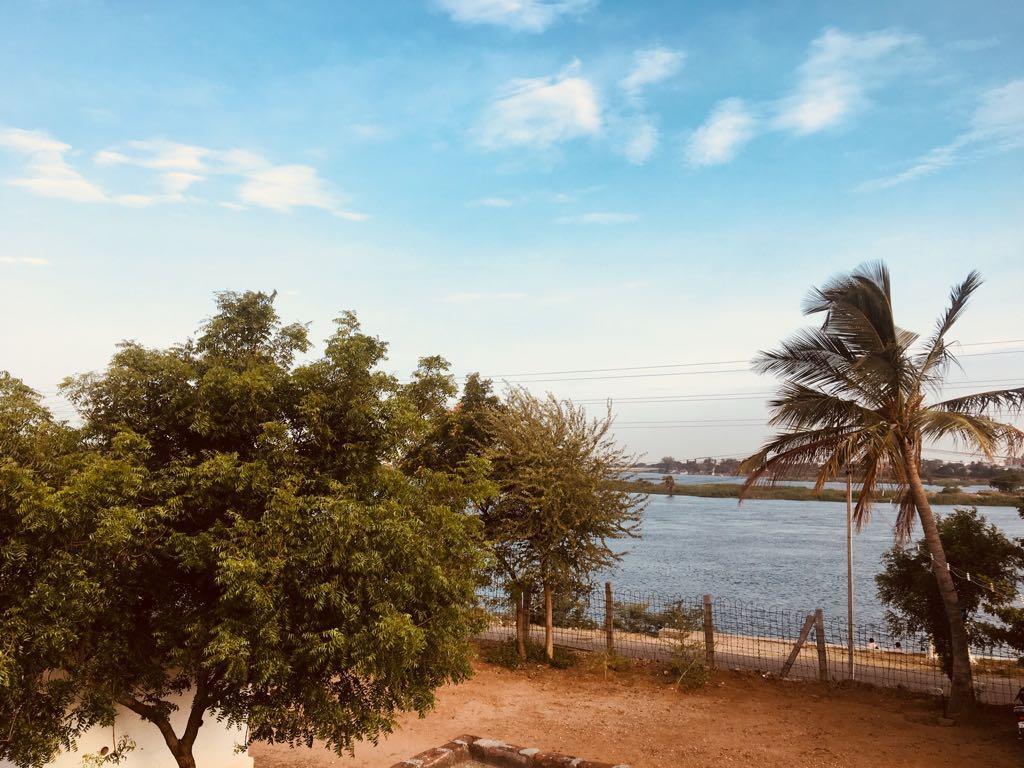
The sacred Kaveri river
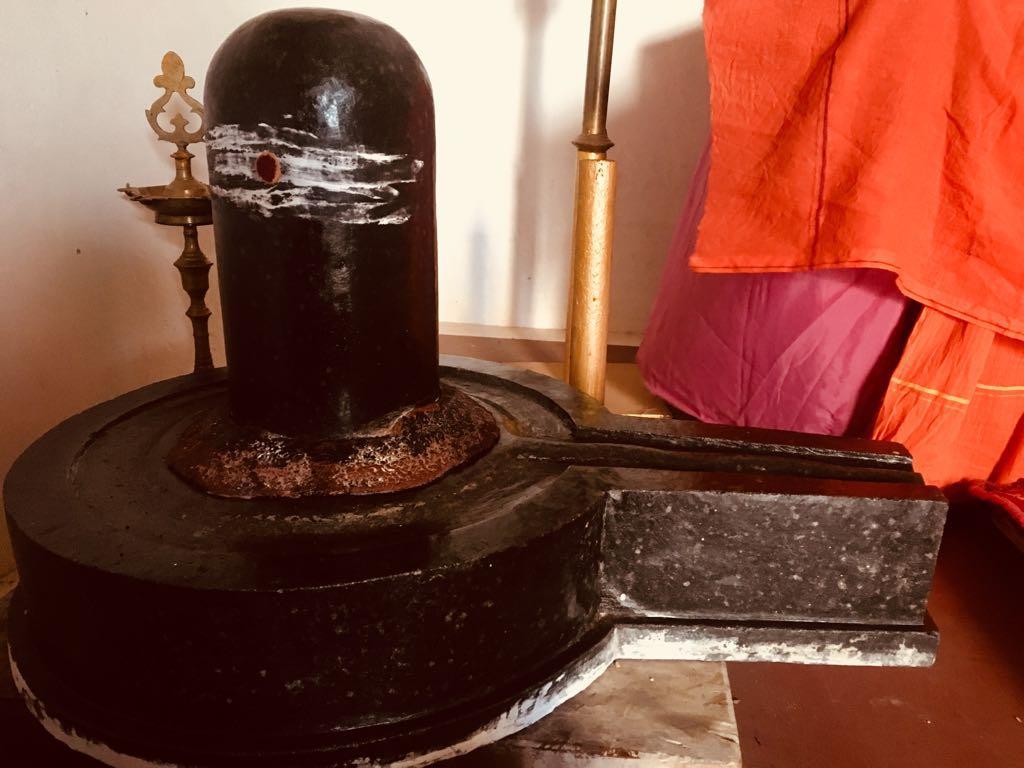
Shiva Linga installed by SPH
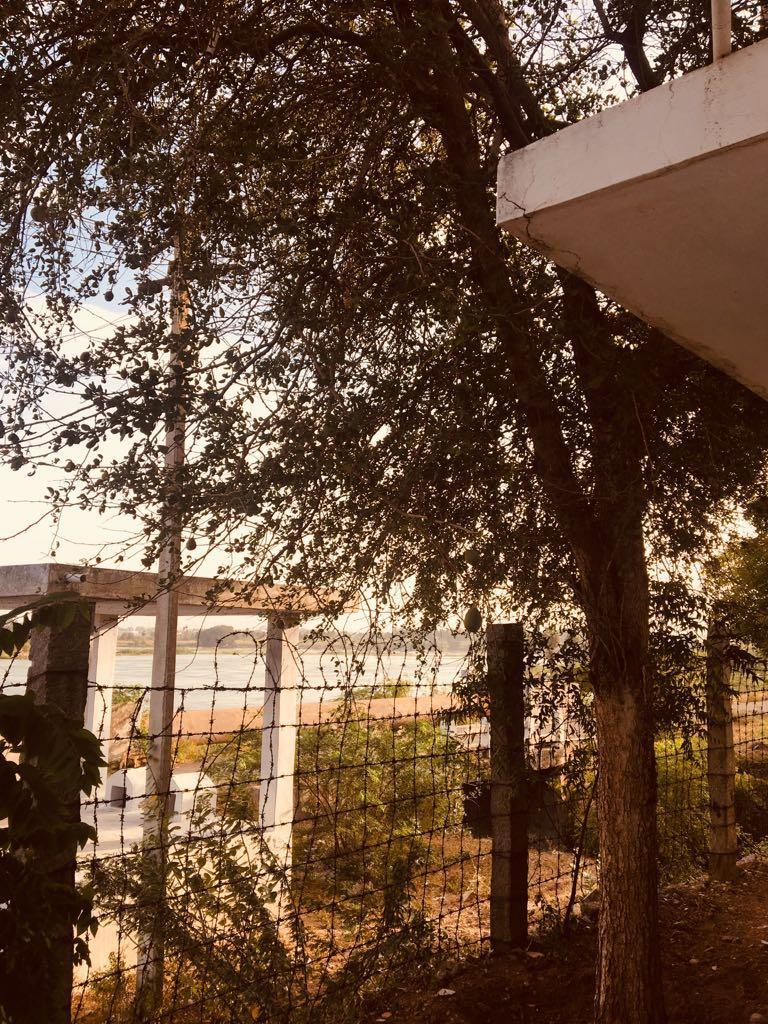
The Bilva tree
Serving the people
Besides the main temple and monastery structures, The Supreme Pontiff of Hinduism inaugurated some of the other important pillars of KAILĀSA which are:
- The Gomandir, a temple for protecting and worshiping the sacred cows, divine beings,
- An annalaya, food temple for serving 24 hours free sattvic food to the citizens and visitors of Tiruchengode,
- A safe haven for running the Nithyānanda Gurukul, the
traditional education system of KAILĀSA, and paved the way for KAILĀSA to function from this region in its fullest glory over the years to follow.
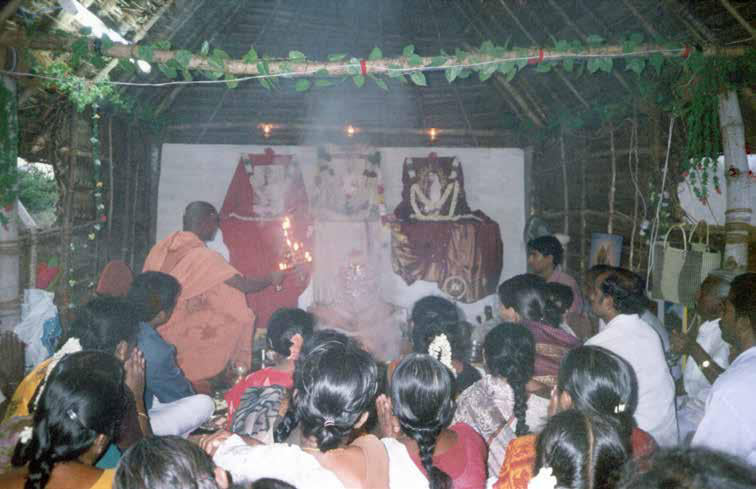
The SPH offers aarti to Śri Ramakrishna, Sarada Devi, and Vivekananda
From 2001, KAILĀSA Thiruchengode began its regular flow of activities of which The SPH was the center. The SPH began offering spiritual services from here, from healing to spiritual discourse and everything in between. People came to the new ashram and received services directly from The SPH.
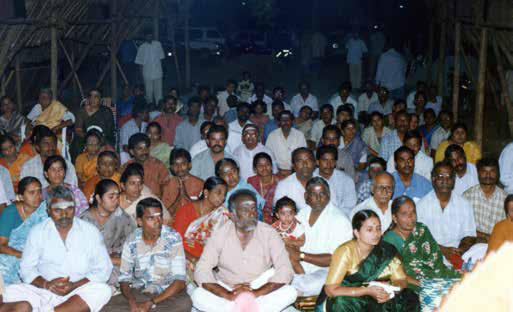
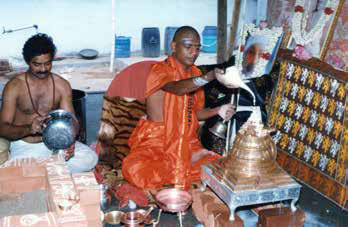
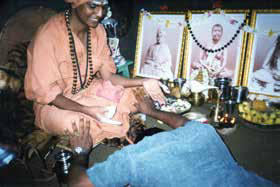
A devotee bows down in deep reverence to The SPH to receive His blessings
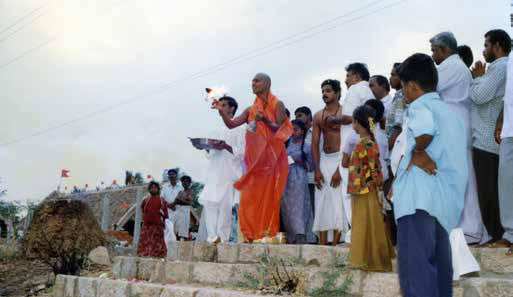
The SPH offering aarti (sacred offering of light) to the river Kaveri
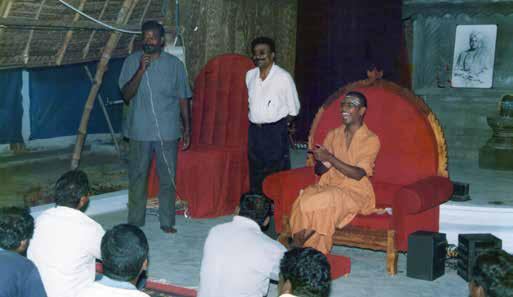
Intimate moments with The SPH in the half built structure of the Tiruchengode Aadheenam
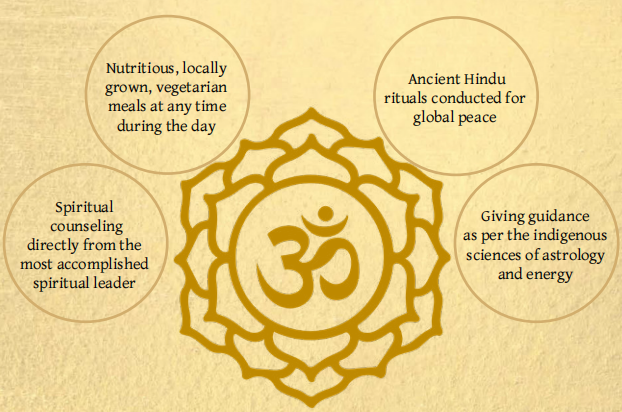
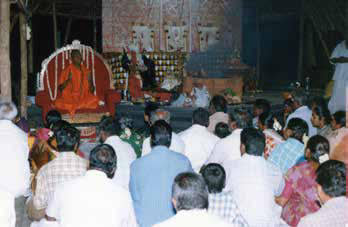
Guru Poornima (the day celebrating the Guru) celebrations on the 5th of July 2001
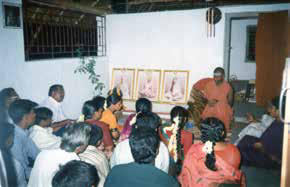
The SPH conducting a proram for devotees in the Aadheenam. The construction of the building is almost complete here.
At this time, The SPH healed a countless number of people, using different techniques from indigenous medicine. For anyone who could not come to Him, He would make arrangements to visit them house to house.
The Kingdom of Thiruchengode thus bears the memory of The SPH in this extremely ground-level intensity, and the people live to protect and worship that memory, through the services of KAILĀSA.
Kingdom of Tiruchengode Today
KAILĀSA Paramparagatha Thiruchengode Sarvajnapeetha continues to serve the subjects of Tiruchengode through various free classes, rituals for peace, and anna dhaan (the food charity). It still holds great significance and sentiment for the citizens of KAILĀSA.
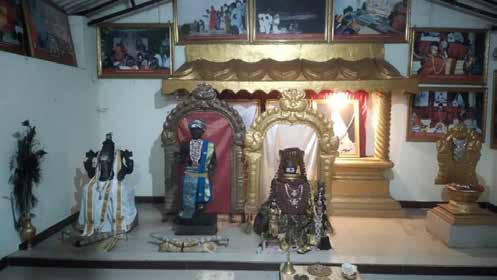

A devotee offers puja and 108 naivedyams (the food offerings) to the deities of the Tiruchengode Kingdom. After offering, the naivedyams will be distributed to the subjects of the kingdom.
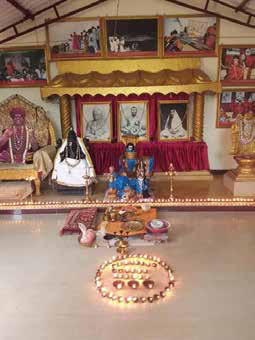
The deities of Ganesha, a Śiva Linga, and The SPH along with photos of Śri Ramakrishna, Sharada Devi, and Vivekananda

